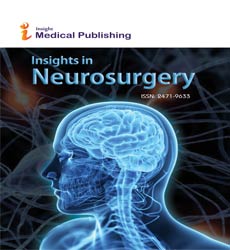Neurosurgical Procedure for Epilepsy Treatment
Brooke Thompson
Brooke Thompson*
Department of Neurosurgery, University of Illinois Chicago, Chicago, USA
- *Corresponding Author:
- Brooke Thompson
Department of Neurosurgery,
University of Illinois Chicago, Chicago,
USA
E-mail:brooke.thom@son.edu
Received Date: December 14, 2021; Accepted Date: December 28, 2021; Published Date: January 4, 2022
Citation: Thompson B (2022) Neurosurgical Procedure for Epilepsy Treatment. Neurosurg. Vol.5 No.S2:002.
Description
Epilepsy surgery is a neurosurgical technique in which a seizure-causing region of the brain is removed, disconnected, or stimulated. The goal is to eliminate or drastically reduce seizure frequency, because uncontrollable seizures pose a significant danger of harm and death. Anticonvulsive medications, often known as antiepileptic drugs, are the first line of treatment for epilepsy. The majority of patients will respond to one or two drug trials. Some people with epilepsy have a focal epilepsy syndrome, which means their condition isn't well controlled by anticonvulsants. Surgical epilepsy treatment may be an option for patients with this kind of epilepsy.
The purpose of an epilepsy surgery examination is to determine the location of the "epileptic focus" (the epileptic abnormality) and whether resective surgery will disrupt normal brain function. The epileptogenic zone's delineation is critical in identifying the borders of the area that must be removed in order to achieve seizure freedom while also avoiding harm to the "eloquent cortex" (damage to this area produces neurological deficit). The definition of the epileptogenic zone has expanded as localization technology has advanced, including a larger area of the brain than before. The resection, or cutting away, of brain tissue from the area of the brain that contains the epileptic focal is known as resective surgery. Physicians will also check the epilepsy diagnosis to ensure that the spells are caused by epilepsy (as opposed to non-epileptic seizures). Neurological examination, routine EEG, long-term video-EEG monitoring, neuropsychological evaluation, and neuroimaging such as MRI, Single Photon Emission Computed Tomography (SPECT), and Positron Emission Tomography are all common parts of the evaluation (PET). As a supplementary test, several epilepsy centres utilise the intracarotid sodium amobarbital test (Wada test), functional MRI (fMRI), or Magnetoencephalography (MEG). Computer models of seizure genesis have recently been suggested as a potential source of new information about the source of seizures.
Once the epilepsy focus has been identified, the type of surgery that will be used to treat it is determined. The type of surgery is determined by the seizure focal point loaction. Temporal lobe resection, hemispherectomy, ground temporal and extratemporal resection, parietal resection, occipital resection, frontal resection, extratemporal resection, and callosotomy are only a few of the epilepsy surgeries available.
Hemispherectomy, sometimes known as hemispherotomy, is a procedure that includes the removal or functional disconnection of most or all of one half of the brain, often leaving the basal ganglia and thalamus. It is only given to patients who have the most severe epilepsies, such as those caused by Rasmussen's encephalitis. Due to neuroplasticity, the residual hemisphere of the brain may gain some motor control of the ipsilateral body in very young children (2–5 years old); in older patients, paralysis occurs on the side of the body opposite the part of the brain that was removed, with a lower chance of recovery.
Patients with temporal lobe epilepsy or whose seizure focus is in the temporal lobe may benefit from temporal lobe resection. The most prevalent type of seizure in teenagers and young adults is temporal lobe seizures. The treatment entails removing the seizure focus by resecting, or cutting away, brain tissue in the temporal lobe region. In order to properly determine the target area and its limits, a convergent clinical, MRI, and EEG evaluation is required for temporal lobe resection.
Temporal lobe resection of the dominant hemisphere commonly causes verbal memory impairment, whereas temporal lobe resection of the non-dominant hemisphere frequently causes visual memory impairment.
Patients with extratemporal epilepsy, or epilepsy whose seizure focus is outside of the temporal lobe and comes from the occipital lobes, parietal lobe, frontal lobe, or multiple lobes, may benefit from extratemporal lobe excision. Due to the unpredictability of the seizure focus, the technique often necessitates more than clinical, MRI, and EEG convergence. Invasive investigations, in addition to further imaging techniques such as PET and SPECT, may be required to pinpoint the seizure focus. Extratemporal lobe resection is often less effective than temporal lobe resection.
Open Access Journals
- Aquaculture & Veterinary Science
- Chemistry & Chemical Sciences
- Clinical Sciences
- Engineering
- General Science
- Genetics & Molecular Biology
- Health Care & Nursing
- Immunology & Microbiology
- Materials Science
- Mathematics & Physics
- Medical Sciences
- Neurology & Psychiatry
- Oncology & Cancer Science
- Pharmaceutical Sciences
